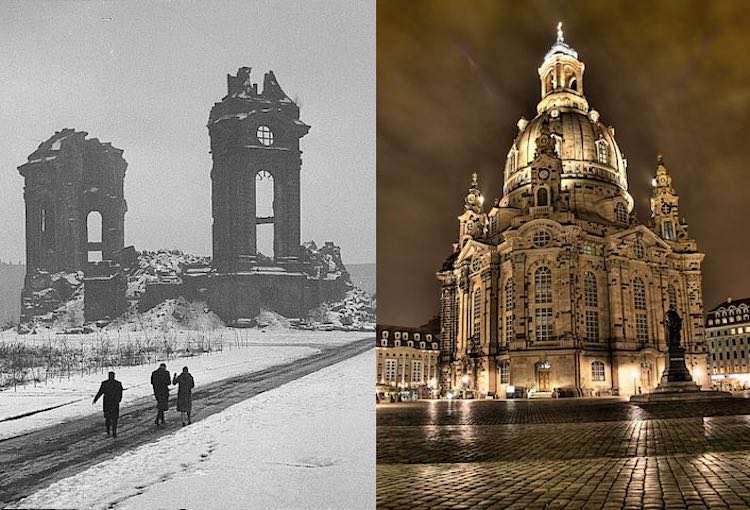Cops' Surprising Happy Ending After Thieves Steal Boy's 6 Pumpkins (WATCH)
When this little boy called the cops to report his pumpkins were stolen, police went above and beyond to right the wrong.

It's been ten years since the glorious Frauenkirche church in Dresden, Germany, became the city's jewel again, after being destroyed in firebombing during World War II and left in a heap of memorial ruins for almost 50 years.
The rebirth was only possible thanks to scores of archaeological volunteers and dedicated enthusiasts who raised $100 million in donations from around the world.
The Lutheran "Church of Our Lady" was two centuries old, a stunning example of architectural skill, when bombs in 1945 caused the huge stone dome to topple, leaving only small sections of two walls and an alter, amid a pile of rubble 55-feet high (17m).
Rebuilding the Baroque masterpiece was out of the question following the devastating war. Officials in East Germany left it as a memorial to the fallen in war. The blackened stones would lie in wait in the center of the city for the next 45 years.
It was not until the fall of the Berlin Wall and the reunification of Germany in the 1990s that people began to dream of resurrecting the old skyline of Dresden, with its crown, the bell-shaped dome that rose higher than a football field over the city.
One of those people was Günter Blobel, a German-born American who had seen the original church as a boy when his refugee family took shelter in a nearby town in the days before the city was bombed. He heard about efforts to reconstruct the church, and became a major backer, creating the US nonprofit Friends of Dresden. In 1999, he won the Nobel Prize for medicine and donated the award money, nearly $1 million, and became the single largest individual contributor to the project.
Meanwhile, hundreds of architects, art historians, and engineers sorted the thousands of stones, identifying and labeling each for reuse in the new structure.
Some large chunks of statues, like the one depicting Moses, and two thousand pieces of the original altar were cleaned and incorporated into the new structure. Nearly 80 percent of the altar (see photo at bottom) was reconstructed using the original materials.
About 46 percent of the original stones in the rubble heap were reused in the new structure. A computer imaging program that could move the stones three dimensionally around the screen in various configurations was used to help architects find where the original stones sat and how they fit together. The older blackened stones are easy to identify within the walls of the rebuilt church.
The new golden cross that tops the dome was funded by the British people and the House of Windsor and was made, using the original 18th-century techniques, by a British silversmith whose father was on one of the airplanes that dropped bombs on the city. The cross that once topped the dome, now twisted and charred, stands to the right of the new altar.
Most striking of all the church features was the towering dome. Dresden architect George Bähr had built a structure that critics of the day ridiculed. There was no way the eight slender church pillars and walls would withstand the weight of the colossal stone dome.
An engineering feat comparable to Michelangelo's dome of St. Peter's Basillica in Rome, the church's 12,000-ton sandstone dome framed in wood proved to be exceptionally stable. So strong, witnesses during the Seven Years' War in 1760 said that while the dome had been hit by more than 100 cannonballs, the projectiles bounced right off.
Today, the Frauenkirche can hold 1,800 people in the light-flooded interior, with a glowing painted ceiling applied in the same techniques of old. Not only church services, but concerts are held there, a tradition that goes as far back as 1843, when the famous composer Richard Wagner premiered the only piece he ever composed for choirs, involving some 1,200 singers.
The historical cobblestone streets and buildings surrounding the church were also restored to their former glory. With nearly 20 million visitors in the past 10 years, Dresden's Frauenkirche has become not only a tourist magnet, but a landmark symbol of reconciliation between former warring enemies.
Photo credits: (top) David Müller; Bundesarchiv, Bild; (aerial) Wolfgang Pehlemann (interior) In Digo Photography and Gryffindor – CC
Be the first to comment